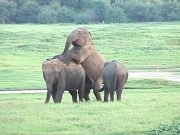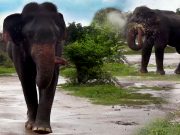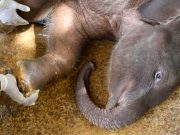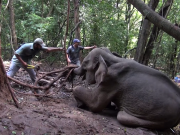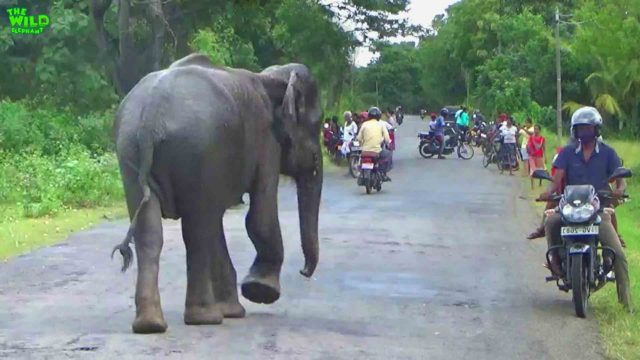This situation occurred when a giant sick elephant moved towards a farming village. Villagers got scared and to seek help from the wildlife department and its officers. The only way to deal with this situation is to treat an elephant and relocate this elephant back to a conserved site.
People are chasing an elephant. Someone people were using firecrackers too while the rest object it.
Chasing an elephant like this is not acceptable, but it’s better than physically harming them.
The main intention of these villagers is to get the elephant out of the road, so that the veterinarian and other officers of the department of wildlife and conservation, Sri Lanka can treat this elephant.
To treat an elephant, restraining with sedatives is preferred, as their massiveness do not permit nor be safe to use manual restraint methods such as tying with a rope.
Especially wild elephants. But to sedate, the surrounding area should be risk-free to the animal, as if fallen down or something similar occur, the animal can get harmed if there are risky structures such as holes, drops and sharps. Therefore the giant must be taken out of the road.
Finally, she moved into the adjacent field, and now they can begin their treatment process.
So that the team gathered by preparing the darts with sedatives. The elephant was darted with a rifle. The team must be patient and should wait till the drug act.
After making sure that the elephant is sedated, they decide to start the treatment.
Providing medicine to an elephant is not easy, and as they are massive animals, they need large doses.
A single multidose vial will be only a part of an elephant’s dose.
Since large doses are required, even to provide a single drug. Several shorts need to be given.
Before finishing off, the injection sites are sprayed with an antiseptic because these needle pricks can get infected easily in the wild.
Finally, the sedation is reversed.
One of the common complications of sedation and anaesthesia is increased body temperature. As sedation prevents them from flapping their ears which they use as a means of cooling.
Therefore, to help the elephant to cool, and regulate the temperature more quickly, water is poured.
Now wildlife department and its officers relocate this elephant back to a conserved site or a national park where this elephant will not get to harm or be harmed by humans in any case.








